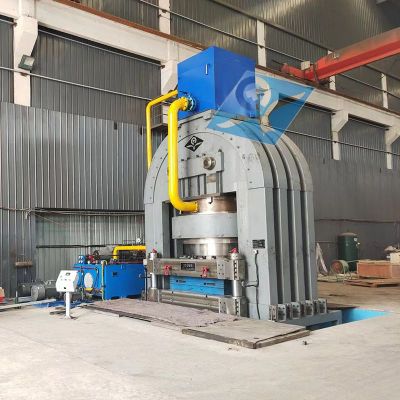What is Metal Plates Forming Presses
Metal plates forming presses represent a crucial category of machinery in the realm of metalworking. These presses play a pivotal role in shaping various types of metal plates, contributing to the production of diverse components used in industries ranging from automotive manufacturing to construction.
1. Understanding Metal Plates Forming Presses: Metal plates forming presses are hydraulic or mechanical machines designed to deform and shape metal plates into desired configurations. These presses exert substantial force on the metal, causing it to undergo plastic deformation, resulting in the desired form or structure.
2. Types of Metal Plates Forming Presses:
Hydraulic Presses: Utilizing hydraulic systems, these presses offer high force capabilities and precise control, making them suitable for a wide range of metal forming applications.
Mechanical Presses: Operated by mechanical systems, these presses are known for their speed and efficiency in metal forming processes.
3. Applications:
Sheet Metal Forming: Metal plates forming presses are extensively used in shaping sheet metal for applications such as automobile body panels, aircraft components, and household appliances.
Stamping and Punching: These presses are employed for stamping and punching operations, producing intricate designs and shapes on metal surfaces.

Plate Bending and Rolling: Metal plates forming presses facilitate the bending and rolling of metal plates, vital in the creation of cylindrical or curved structures for pipelines and other industrial components.
4. Key Features:
Force Capacity: Metal plates forming presses come in various force capacities, allowing for the efficient processing of different thicknesses and types of metal plates.
Precision Control: Advanced models offer precise control over the forming process, enabling the production of complex and high-precision components.
Versatility: These presses can handle a variety of metal materials, including steel, aluminum, and alloys, providing versatility in metalworking applications.
5. Technological Advancements: Recent technological advancements have introduced features such as computer numerical control (CNC) and automation, enhancing the efficiency, accuracy, and repeatability of metal forming processes.
6. Importance in Manufacturing: Metal plates forming presses are integral in the manufacturing of components that require specific shapes and dimensions. Their ability to handle various materials and form intricate designs contributes significantly to the efficiency and precision of metalworking operations.
Conclusion: In conclusion, TPY metal plates forming presses represent a cornerstone in the field of metalworking, offering the capability to shape and transform metal plates for a multitude of industrial applications. As technology continues to evolve, these presses will likely play an even more pivotal role in advancing the efficiency and precision of metal forming processes across diverse industries.




